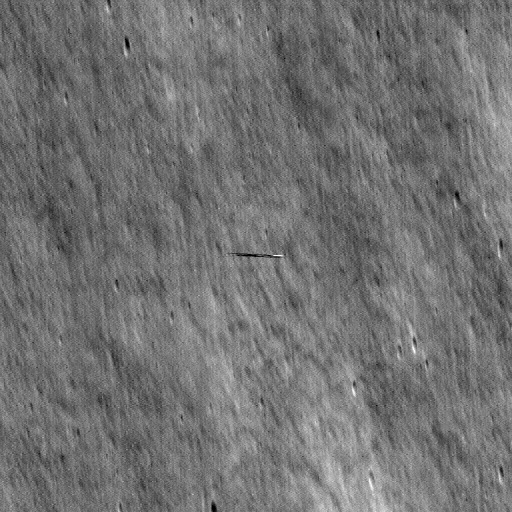NASA's Lunar Reconnaissance Orbiter (LRO) has caught a peculiar sight while orbiting the moon, capturing images of an object in motion near its trajectory. But what is it?

LRO Crosses Paths with Korea's Lunar Orbiter
The LRO, a veteran spacecraft in lunar exploration, recently crossed paths with the Korea Aerospace Research Institute's Danuri lunar orbiter.
During this encounter between March 5 and March 6, 2024, the LRO managed to snap several images of the Danuri orbiter as the two spacecraft swiftly passed each other in opposing orbits.
The LRO's narrow-angle camera, part of its Lunar Reconnaissance Orbiter Camera (LROC) suite, captured these images during three close encounters with the Danuri orbiter.
The precise timing required to capture these images was a feat achieved by NASA's LRO operations team at the Goddard Space Flight Center in Greenbelt, Maryland.
Due to the rapid relative velocities between the two spacecraft, which were traveling at approximately 7,200 miles per hour (11,500 kilometers per hour), the LRO's camera had to be meticulously positioned to catch a glimpse of the Danuri orbiter.
Despite the short exposure time of just 0.338 milliseconds, the Danuri orbiter appears elongated in the images, magnified to ten times its size due to the high relative velocities.
Read Also : The First Non-Americans to Land on the Moon Will be Japanese as NASA, JAXA Sign Agreement for Lunar Rover
LRO Captures the Danuri Orbiter
In the images captured by the LRO, the Danuri orbiter appears as a blurred dark spot in the bottom third of the frame, indicating its swift movement in the opposite direction of the LRO.
At the time of imaging, the Danuri orbiter was orbiting approximately 5 miles (8 kilometers) below the LRO's orbit, while the LRO itself was positioned about 50 miles (80 kilometers) above the moon's surface, according to NASA.
The LRO's orientation and distance from the Danuri orbiter during each imaging opportunity varied. In the first encounter, the LRO was angled downwards by 43 degrees from its typical orientation, capturing the Danuri orbiter from a distance of 3 miles (5 kilometers) above it.
Subsequent encounters saw the LRO positioned closer to the Danuri orbiter with varying degrees of orientation to optimize imaging conditions.
Last spring, the Danuri orbiter had an opportunity to photograph the LRO using its ShadowCam instrument. This instrument captured a high-resolution image of the LRO as the Korean spacecraft passed approximately 11 miles (18 kilometers) above it on April 7, 2023.
The LRO, which was launched on June 18, 2009, is managed by NASA's Goddard Space Flight Center in Greenbelt, Maryland. With its seven powerful instruments, the LRO has collected a treasure trove of data, greatly contributing to our knowledge about the Moon.
Related Article : NASA Upgrades Its SLS Mega-Rocket Design to Make It a More Powerful Beast for Future Artemis Missions

ⓒ 2025 TECHTIMES.com All rights reserved. Do not reproduce without permission.




